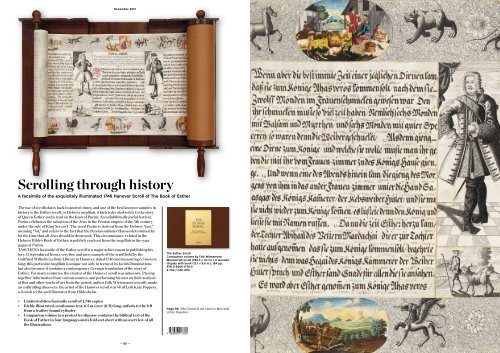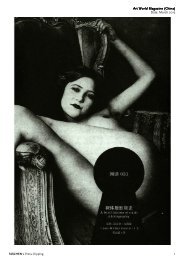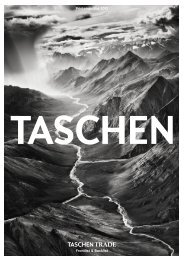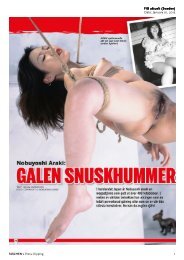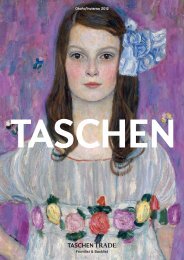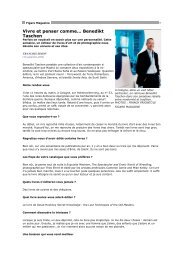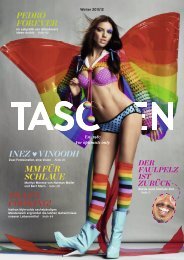STrUCTioN - Taschen
STrUCTioN - Taschen
STrUCTioN - Taschen
Create successful ePaper yourself
Turn your PDF publications into a flip-book with our unique Google optimized e-Paper software.
December 2012<br />
Scrolling through history<br />
A facsimile of the exquisitely illuminated 1746 Hanover Scroll of The Book of Esther<br />
The use of scrolls dates back to ancient times, and one of the best known examples in<br />
history is the Esther scroll, or Hebrew megillah, which is devoted solely to the story<br />
of Queen Esther and is read on the feast of Purim. An uninhibitedly joyful festival,<br />
Purim celebrates the salvation of the Jews in the Persian empire of the 5th century<br />
under the rule of King Xerxes I. The word Purim is derived from the Hebrew “pur,”<br />
meaning “lot,” and refers to the fact that the Persian minister Haman determined by<br />
lot the time that all Jews should be destroyed. This circumstance, related in the<br />
Hebrew Bible’s Book of Esther, is publicly read out from the megillah in the synagogue<br />
at Purim.<br />
TASCHEN’s facsimile of the Esther scroll is a major achievement in publishing history.<br />
It is produced from a very fine and rare example of the scroll held by the<br />
Gottfried Wilhelm Leibniz Library in Hanover, dated 1746 and measuring 6.5 meters<br />
long; this particular megillah is unique not only in terms of its lavish illuminations<br />
but also because it contains a contemporary German translation of the story of<br />
Esther. For many centuries, the creator of the Hanover scroll was unknown. Piecing<br />
together information from various sources, and performing his own stylistic analysis<br />
of this and other works of art from the period, author Falk Wiesemann recently made<br />
an enthralling discovery: the artist of the Hanover scroll was Wolf Leib Katz Poppers,<br />
a Jewish scribe and illustrator from Hildesheim.<br />
• Limited edition facsimile scroll of 1,746 copies<br />
• Richly illustrated, continuous text, 6.5 m (over 21 ft) long, unfurls to the left<br />
from a leather-bound cylinder<br />
• Companion volume in a protective slipcase contains the biblical text of the<br />
Book of Esther in four languages and a fold-out sheet with an overview of all<br />
the illustrations<br />
The Esther Scroll<br />
Companion volume by Falk Wiesemann<br />
Manuscript scroll (252.7 x 13.1 in.) in wooden<br />
display with book (13.1 x 8.6 in.), 184 pp.<br />
978-3-8365-1778-2<br />
$ 700 / CAD 800<br />
Page 58: Villa Contarini dei Leoni in Mira with<br />
Limon Rosolino.<br />
,!7ID8D6-fbhhic!<br />
— 60 —<br />
— 61 —


